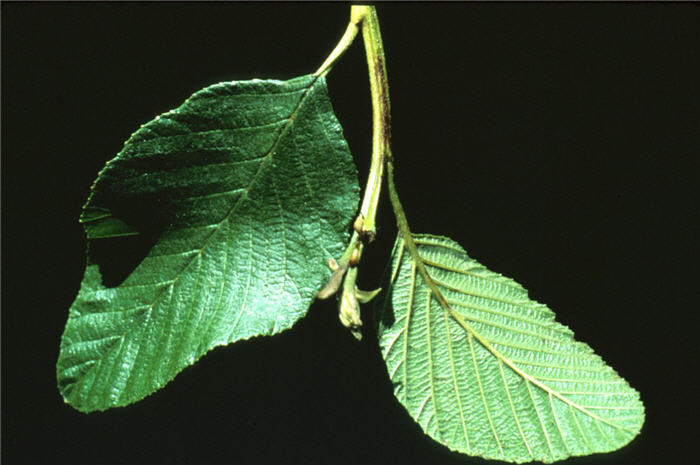| Botanical Name: Alnus glutinosa | |
| Common Name: European Alder |

-
Anatomy
-
Culture
-
Design
Plant Type
Tree
Height Range
40-60'
Flower Color
n/a
Flower Season
n/a
Leaf Color
Dark Green
Bark Color
Brown, Green
Fruit Color
Brown, Yellow
Fruit Season
Winter
Sun
Full, Half, Shade
Water
Medium, High, Extra in Summer
Growth Rate
Fast, Moderate
Soil Type
Clay, Loam
Soil Condition
Average, Rich, Moist
Soil pH
Acid, Neutral, Basic
Adverse Factors
n/a
Design Styles
English Cottage, Wetlands, Woodland
Accenting Features
Multi-trunk Tree
Seasonal Interest
Winter, Spring
Location Uses
Background, Lawn, Park
Special Uses
Screen, Wind Break, Naturalizing
Attracts Wildlife
Birds
Information by: Stephanie Duer
Photographer: Normans/Jacobs/Mullany
Photographer: Normans/Jacobs/Mullany
-
Description
-
Notes
European Alder, also called Common Alder, is a tall (30 to 50 feet tall and 20 to 30 feet wide), rounded to oval tree with small, round, serrated leaves, long catkin-like clusters, and little nutlets that resemble very small pine cones. This tree is not suited for dry landscapes, but could be a good choice where there is a high water table, moist soils, or along a waterway.
Grows best in course to medium, nutrient rich, moist soils and sunny to lightly shaded areas. European alder can tolerate floods but not drought. It is able to survive extremely cold winters. The seeds, buds, and catkins are important winter food for various birds, including chickadees and goldfinches.